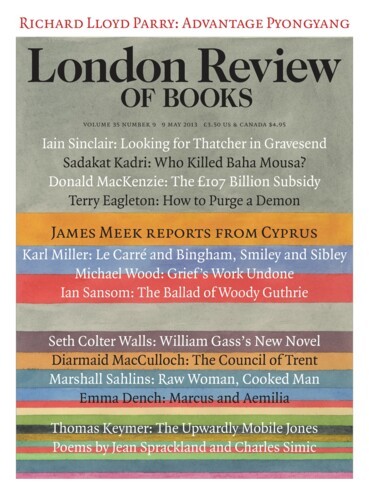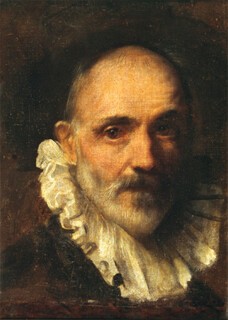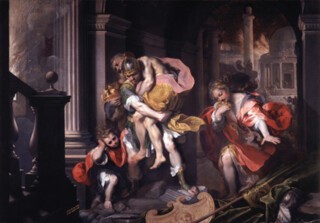Successful artists are usually attracted to major cities, where reputations are most easily made and commissions most abundant. Barocci was a conspicuous exception. Born in the 1530s in the provincial backwater of Urbino, the birthplace also of Raphael, he completed his training in Rome, but then, probably in 1563, returned to his native town, where he remained for almost the whole of his life, dying there in 1612. Fortunately the area in which he lived provided enough work for one outstanding painter, and Barocci was able to make an excellent living mainly by producing altarpieces for Urbino and other towns nearby, as well as several smaller works for domestic settings. He also painted a few portraits, some of the finest of which are included in the National Gallery exhibition (until 19 May), including the very finest of all, Francesco Maria II della Rovere from the Uffizi.
According to his early biographers he was forced to leave Rome because of ill health, which some attributed to the results of attempted poisoning by jealous rivals. In 16th-century Italy sudden illness was often blamed on poison, not least among artists, but the suggestion, expressed by the 17th-century writer Bellori, that some young painters invited Barocci to a meal and introduced poison into his salad seems particularly implausible. Whatever the truth of the matter, for four years after his return to Urbino he produced very little and for the rest of his life seems to have worked only a few hours a day and then with great difficulty.
Contemporaries report that he was of a melancholy and solitary disposition as well as extremely pious, perhaps in part because he attributed the recovery of his health, such as it was, to the intervention of the Virgin. He was also notably stubborn, refusing to hurry with commissions and only accepting those that appealed to him. As his reputation grew, prospective patrons often tried to approach him via the Duke of Urbino, who admired and protected him. Barocci’s attitude is understandable given that he was an obsessive perfectionist, with an astonishingly labour-intensive technique. But despite his shyness and introversion he was not indifferent to the value of publicity, and a remarkably high proportion of his paintings were reproduced in engravings during his lifetime, often under his close supervision. It was principally through such prints that his fame was established and his work became known to later artists and writers.
His few surviving early pictures are not especially distinctive, but by the late 1560s he had established a style that remained largely unchanged for the rest of his life and that makes his paintings immediately recognisable. He favoured softer outlines than his contemporaries in central Italy, and an unusually wide range of colours, usually pastel in tone and distributed across the picture in areas of fluttering drapery broken by strong contrasts of light and shade. The restless surface of the paintings is complemented by figures almost always shown in movement and foreshortened, either from above or from below. Finally, he gave his figures a sweetness of expression not always devoid of sentimentality, often emphasised by touches of pink in cheeks and lips.
Already in the 17th century it was recognised that the obvious precedent for his style was provided by Correggio, most of whose works were in Parma, a city Barocci almost certainly never visited. The traditional theory that he had seen drawings by Correggio doesn’t explain why some of his paintings are so obviously related to Correggio’s, none of which was engraved before 1577; but it has recently been proposed that he knew Correggio’s work at second hand, through painted copies in the private collection in Rome of a bishop from Parma. This proposal is very plausible, and it underlines Barocci’s independence of approach and his refusal to be satisfied with the more prestigious and accessible artistic models available in Rome.
His use of drawings, which survive in greater numbers than for any other artist of his time, is equally unconventional. For example, more than fifty drawings are known today for his early masterpiece, the Deposition in Perugia. Barocci would produce sketches of the whole composition, of single figures and parts, such as heads, hands and feet, often using coloured chalks, and full-size, highly finished studies of heads. It seems that every element of a picture, as well as the total effect, was worked out in advance in the most meticulous detail. Barocci grew up in an artistic environment in which drawing was regarded as the most important and challenging aspect of the painter’s activity, an indispensable tool for proving on nature, which was the final goal. But his contemporaries tended to use drawings for developing the general composition and studying individual figures, whereas for Barocci the actual process of producing the finished painting was largely mechanical. It is unclear whether this had something to do with his physical weakness, or was simply a personal choice. But the result is that in his pictures every element seems to be calculated with obsessive care: the extreme artifice of the result is part of the appeal, and helps to explain the pictures’ fame and their influence on artists of the following century.
He is often and rightly regarded as one of the first artists to reflect the more anodyne and reassuring aspects of Counter-Reformation Catholicism. References to pain and suffering are kept to a minimum, and the holy figures are invariably benign and often ecstatic, their mood indicated by their eyes rolling up towards heaven, a generally ludicrous device and nowhere more so than in the unconvincing Christ in the late Institution of the Eucharist, which anticipates a vast tradition of religious kitsch. Even with the most overtly dramatic subjects, the emotions of the figures seem muted and excessively tasteful. Thus in the famous Entombment of Christ from Senigallia the Virgin looks resigned and slightly sad, but no more. In much the same way Barocci’s only non-religious narrative, Aeneas Fleeing Troy, produced as a gift for the Holy Roman Emperor and then in a replica for a Roman churchman, while beautifully painted, is entirely unconvincing as drama. So much skill, so little insight. His only scene of martyrdom, now in Milan, is equally bland: here elements of brutality and violence present in some of the drawings were eliminated in the final painting. As one would expect, he is at his best in paintings of the Holy Family or episodes in the life of the Virgin.
The exhibition, originally in St Louis, provides an unparalleled opportunity to see a large and representative group of his paintings, including the altarpieces from Perugia and Senigallia, with a spectacular selection of related drawings. The catalogue is as long as a book and the various contributors are not always clear whether they are writing for their specialist colleagues or for a wider public, although the inclusion of individual entries more than twenty pages long suggests the latter.* Its interest and impact would have been increased by shorter entries and more introductory essays about general aspects of Barocci’s career and reputation, but the illustrations are splendid, and the exhibition should not be missed.
Send Letters To:
The Editor
London Review of Books,
28 Little Russell Street
London, WC1A 2HN
letters@lrb.co.uk
Please include name, address, and a telephone number.



